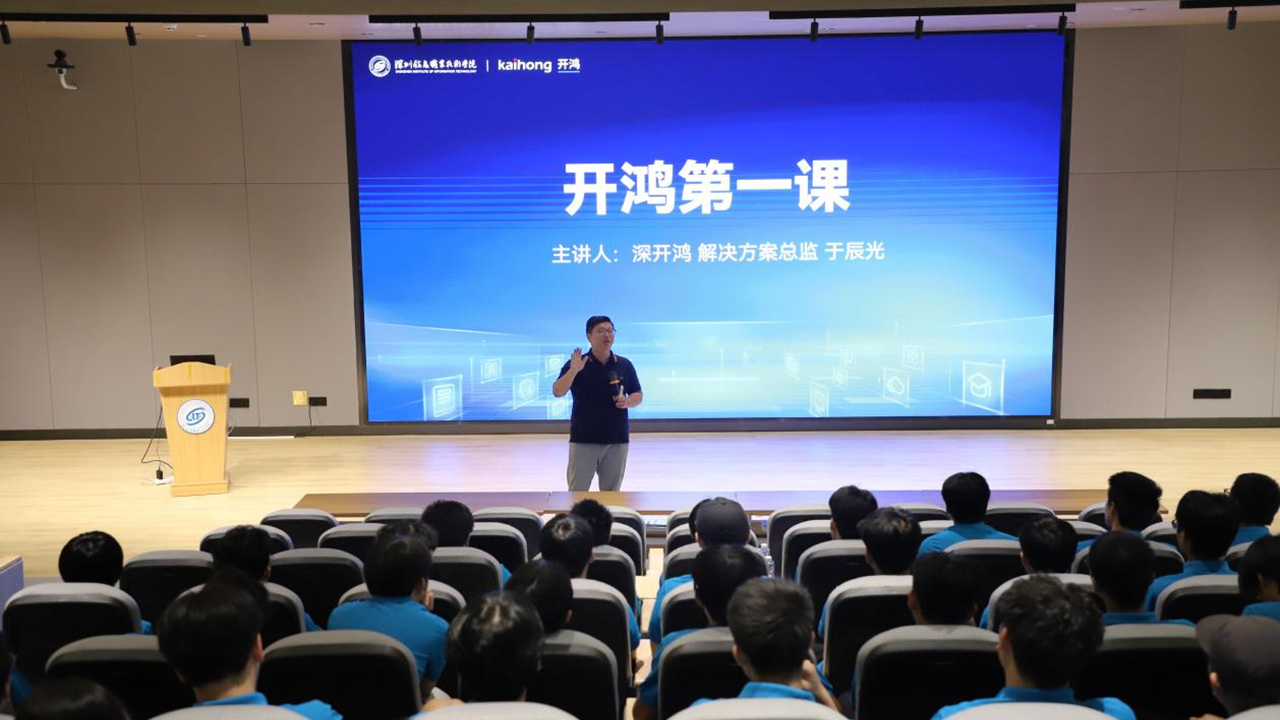SZIIT launches second Huawei operating system class
Writer: Yang Yunfei | Editor: Lin Qiuying | From: Shenzhen Daily | Updated: 2024-11-08

The second classon OpenHarmonytraining is launched at the Shenzhen Institute of Information Technology. File photo
The Shenzhen Institute of Information Technology (SZIIT) has launched the second special class based on Huawei Technologies Co.’s self-developed operating system, HarmonyOS, to help build the Harmony ecosystem that’s vital to the development of China's own software industry.
Following the inaugural class launched in the automotive intelligent technology programin October in 2023, the SZIIT has once again teamed up with Shenzhen Kaihong Digital Industry Development Co., a high-tech company focusing on intelligent internet of things operating systems, and held an inauguration ceremony recently for the second OpenHarmony class, enrolling students in the Internet of Things application technology program.

Students listen to the first lesson of the class.
The SZIIT is the first of its kind in the field of vocational education in China to offer OpenHarmony courses to cultivate high-level engineers, according to the SZIIT.
The SZIIT plans to introduce the class in the intelligent connected network technology and modern mobile communication technology programs, aiming for a total of four new classes each yearin the future.
OpenHarmony is an open-source version of Huawei’s operating system HarmonyOS, or Hongmeng in Chinese, which was first launched in August 2019 after U.S. sanctions cut off support for Google's Android and is designed for various devices and scenarios, including intelligent screens, tablets, wearables and cars.
Huawei donated the core structure package and all the basic capabilities related to the code of HarmonyOS to the OpenAtom Foundation, China’s first open source foundation, in 2020 and 2021, and participated in an open source project called OpenAtom OpenHarmony.
Huawei’s move is regarded as part of the Shenzhen-based tech giant’s broader push to solve China's lack of homegrown operating systems for fundamental digital technologies.
OpenHarmony was the fastest-growing open-source operating system for smart devices last year, with more than 70 organizations contributing to it and more than 460 hardware and software products built across finance, education, aerospace and industry, Huawei said in its 2023 annual report.
The aim of making OpenHarmony open source is to replicate Android's success in removing licensing costs for users and to give companies a customizable springboard for their own products, said Charlie Cheng, deputy manager of the Harmony Ecosystem Innovation Center in Shenzhen.
Key OpenHarmony developers include Shenzhen Kaihong Digital, headed by Wang Chenglu, a former Huawei employee known as Harmony's "godfather", and Chinasoft. Both have worked on infrastructure software, at Tianjin Port and for mines in China's top coal-producing province Shaanxi.
While OpenHarmony is largely confined to China, Brussels-based open-source group the Eclipse Foundation said it was using it to develop a system called Oniro for use in mobile phones and internet-of-things devices.
In the first quarter of 2024, Huawei's HarmonyOS surpassed Apple's iOS to become the second best-selling mobile operating system in China behind Android, research firm Counterpoint said. It has not been launched on smartphones outside China.